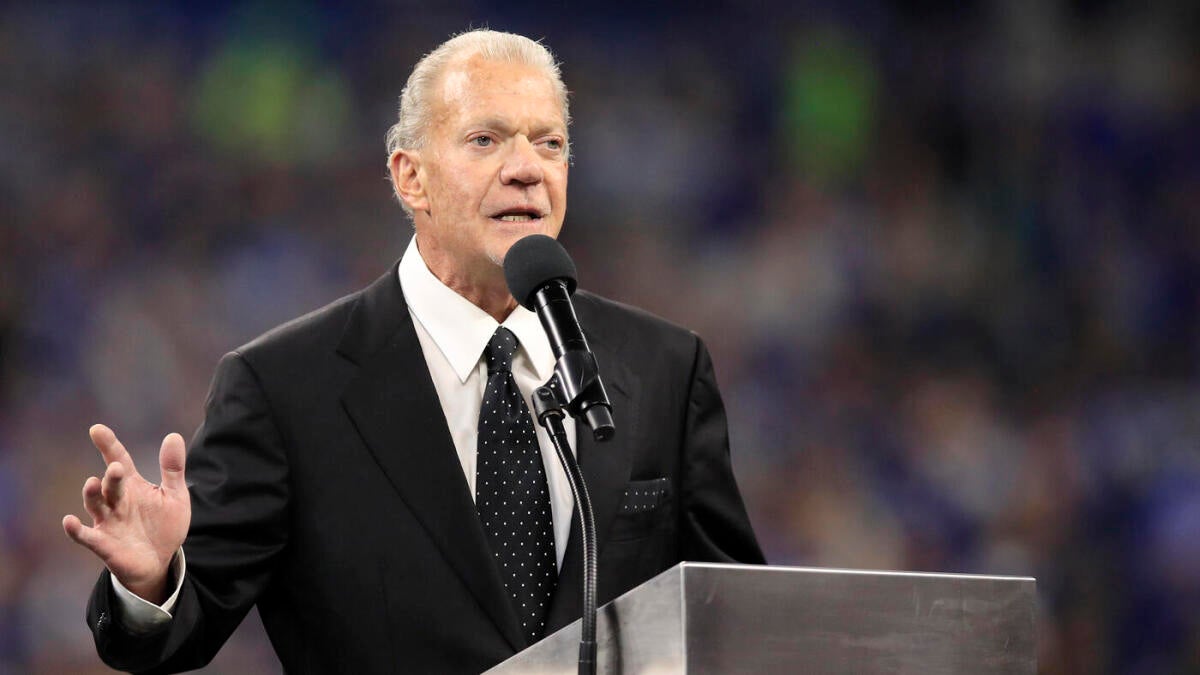Navigating New Frontiers: The Indianapolis Colts’ Ownership Transition
The Indianapolis Colts have embarked on a transformative chapter that blends heritage with innovation. The recent transfer of control from the late Jim Irsay to his three daughters—Carlie Irsay-Gordon, Casey Foyt, and Kalen Jackson—serves as a vivid example of how sports franchises are evolving in their leadership and management models. This transition not only reflects a well-orchestrated family succession strategy but also signals a potential shift in the NFL’s traditionally male-dominated ownership landscape.
—
Honoring a Legacy: Jim Irsay’s Vision and Succession Planning
Jim Irsay’s journey—from inheriting the team in 1997 to elevating it into an NFL powerhouse—is foundational to understanding the Colts’ current trajectory. His stewardship, marked by highlights such as a Super Bowl XLI victory and multiple AFC championships, transcended mere ownership; it was about shaping a culture and identity infused with passion and resilience.
Critically, Jim Irsay recognized early on that the longevity of the franchise’s success depended on thoughtful legacy planning. Starting in 2012, he strategically incorporated his daughters into leadership roles, gradually preparing them for the complexities of ownership. This early involvement in governance was instrumental in not only maintaining organizational stability but also in fostering an environment where the daughters could assimilate the intrinsic values and operational nuances of the Colts.
—
A Triad of Leadership: Defining Roles and Synergy
The delegation of roles among Carlie, Casey, and Kalen is a modern reflection of effective corporate governance applied to sports franchise management. Carlie Irsay-Gordon’s ascension to principal owner and CEO positions her as the visionary force, charged with steering the franchise’s strategic direction and public representation. Casey Foyt’s role as Executive Vice President situates her at the operational core, ensuring internal processes and team management function seamlessly. Meanwhile, Kalen Jackson’s stewardship as Chief Brand Officer centers on amplifying the Colts’ identity, fan engagement, and commercial footprint.
This division leverages their individual strengths while creating a collaborative leadership environment. Their lifelong immersion in Colts culture equips them with both tacit knowledge and practical insights, bridging the emotional and business facets of ownership. Such synergy is vital in mitigating the risks common to shared leadership, especially within family enterprises.
—
Breaking New Ground: Women Leaders in the NFL Landscape
The Colts’ ownership shift is not just significant for the franchise but also symbolically powerful for the NFL at large. Historically dominated by male owners, the league is witnessing a subtle but meaningful emergence of women in executive roles, with the Irsay sisters at the forefront.
Their leadership challenges traditional norms and serves as a beacon of diversity and inclusion within professional sports. Beyond optics, their preparedness, dating back over a decade of active involvement, speaks to a substantive change rather than a symbolic gesture. This progression could inspire other franchises and leagues to rethink and diversify their governance structures, enriching the professional sports ecosystem with new perspectives and leadership styles.
—
Continuity and Change: The Broader Implications for Sports Franchise Ownership
Family ownership in sports has always balanced tradition with the necessity to adapt. The Colts’ transition exemplifies how thoughtful succession planning can ensure continuity while positioning the team to tackle contemporary challenges—from digital innovation to expanding fan demographics.
The integration of Carlie, Casey, and Kalen reinforces this duality. They inherit a brand steeped in history but must also navigate a rapidly shifting terrain marked by technology-driven fan engagement and commercial globalization. Their multifaceted leadership holds potential for innovation in areas beyond the playing field, including community outreach, brand evolution, and strategic partnerships.
Moreover, their rise to ownership underscores evolving gender roles in sports business, suggesting a future where leadership diversity is normalized rather than exceptional.
—
Looking Ahead: A Legacy Reimagined
The Indianapolis Colts are now guided by a leadership trio that embodies the intersection of legacy, family loyalty, and modern executive acumen. This transition is a testament to the power of deliberate succession planning and the promise of diverse leadership in shaping the future of professional sports franchises.
As the Irsay sisters step into their roles, the NFL, fans, and the broader sports community will watch closely—not just for the impact on the game’s outcomes but for how they redefine what ownership looks like in the 21st century. Their stewardship holds the potential to marry past glories with fresh aspirations, setting a precedent for franchise leadership that harmonizes respect for tradition with a bold embrace of change.

